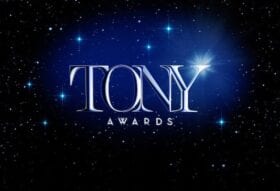The Saudi General Sports Authority unveiled a slate of agreements last week for a roster of events that will take place in the country over the next year, including the World Boxing Super Series and Spain’s La Liga, as well as motor racing and chess. Meanwhile, the country is also laying out the welcome mat for a new sport, locking in a deal with The Drone Racing League for the 2018 DRL Allianz World Championship that will take place in Saudi Arabia next September, marking the professional drone race staged in the kingdom and mark the seventh and final event of the 2018 DRL Season. The final race will be broadcast in 87 countries on the best sports programs on the globe including, ESPN, OSN, Sky Sports, ProSiebenSat.1, FOX Sports Asia, and Disney XD.
Cynopsis caught up with DRL CEO/Founder, Nicholas Horbaczewski to talk about the deal as well as the growth of the sport and the challenges that needed to be overcome.
Horbaczewski on fans: We celebrated our second anniversary this summer, we’ve done two seasons of races and obviously we’ve grown tremendously. The real driver of that is the fans’ passion for the sport. If you look at the viewership we’ve got and the broadcast partners we have and the global reach we have – we are on TV in 75 countries now – you see people are really excited about the sport.
On lessons: We have certainly learned our lessons along the way and the biggest lesson we’ve learned is that the core of this is really about technology. We started out thinking of events and building a sports league and what we’ve discovered is that the magic to this is building technology that pushed the boundaries of what is possible with drones, especially in a professional racing setting. At our core, we are still a technology company and half our team are engineers focused on developing the technology that make all this possible. Some of the fun lessons we’ve learned, is that this is truly a global sport with fans all over the world. This is a sport that crosses language barriers; it crosses cultural barriers, ages and gender. That’s one of the reasons we have pushed so hard to by a global league and not just part of any one region.
On content: The heart of our sport, of course, is the telecast of our races. We are doing two-hours of broadcast of every race on premier sports networks around the world. One of our goals was to be in the top sports network in every market that we are in, and we are now on ESPN, Sky Sports, FOX Sports Asia, etc. and that is the primary way that people interact with the sport. That said, one of the things that makes this sport so great is that it also created incredible digital content and short-form content so people are consuming that content across a wide variety of mediums. We produce a wide variety of content that spans a wide variety of platforms because, frankly, that is how audiences consume content. Sometime you want a 30-second clip while walking down the street and sometimes you want to sit down for a two-hour race. This sport is incredibly amenable to that.
On educating advertisers: What has been the most interesting thing for advertisers to wrap their minds around this sport is that if you think about traditional sports sponsorship, I would think of examples like a patch on a jersey or the Tostitos brand spray-painted on a football field, but those aren’t really authentic forms of sponsorship integration. One of the things that DRL provides is an opportunity to truly integrate your brand into the sport. I think that is unique to this sport. Our courses are worlds that we build, they have themes, they have lighting, etc. and they are meant to feel like something out of a video game. We did a program with BMW this year where we went and flew a race inside the BMW museum in Munich. That was authentic integration and you couldn’t have a soccer match or football game there.





